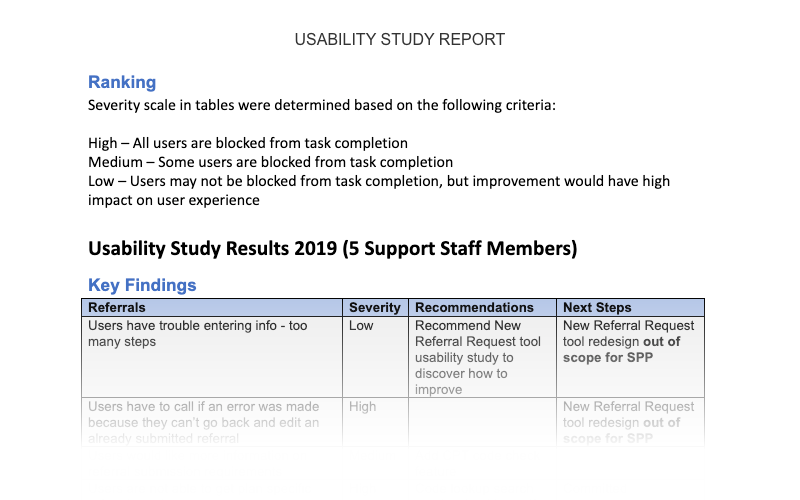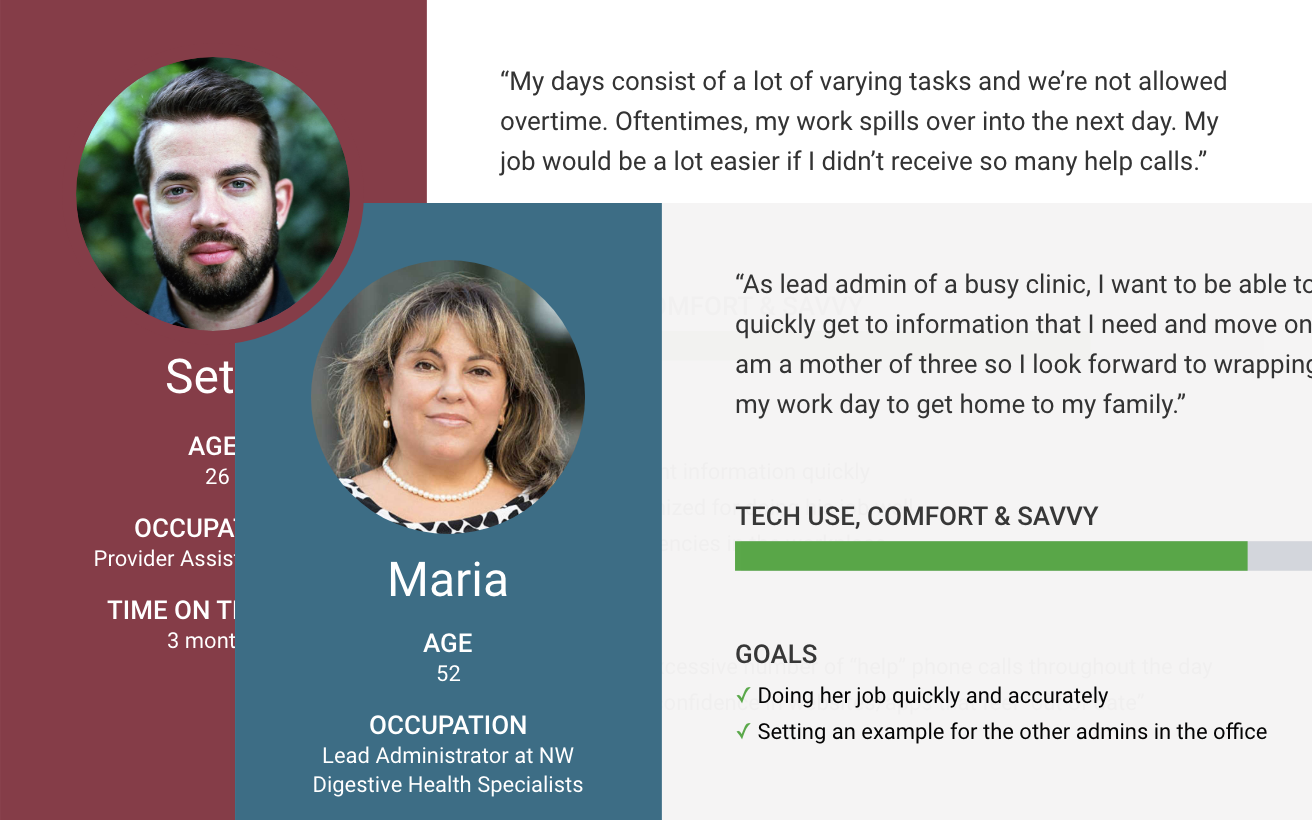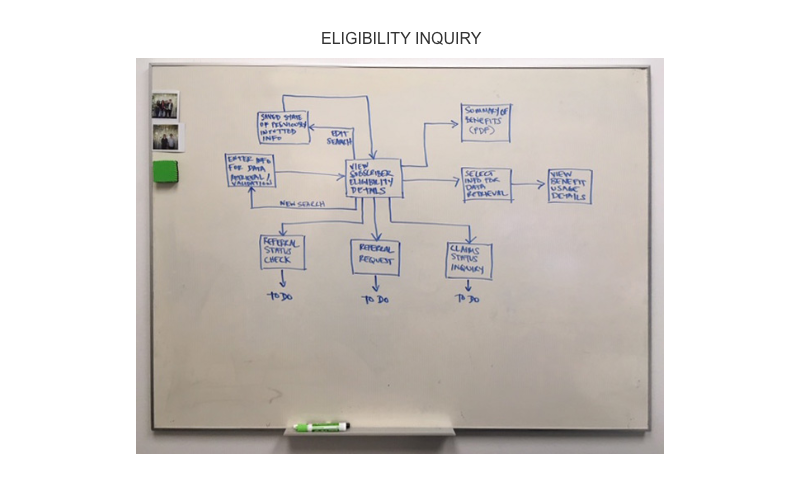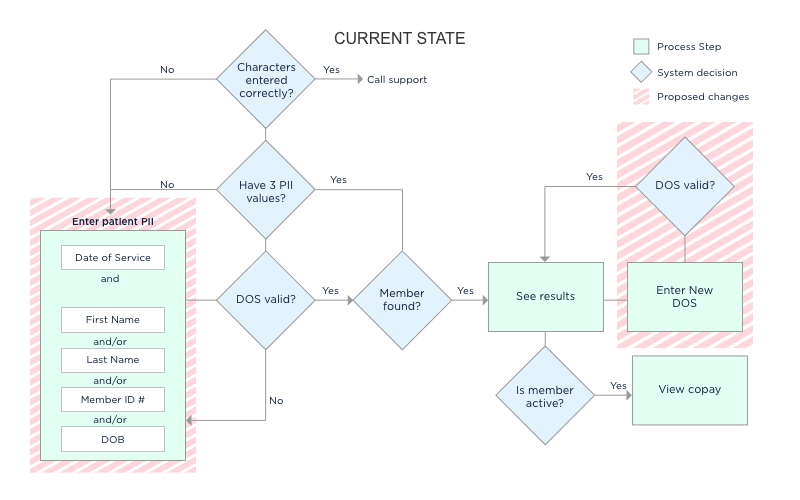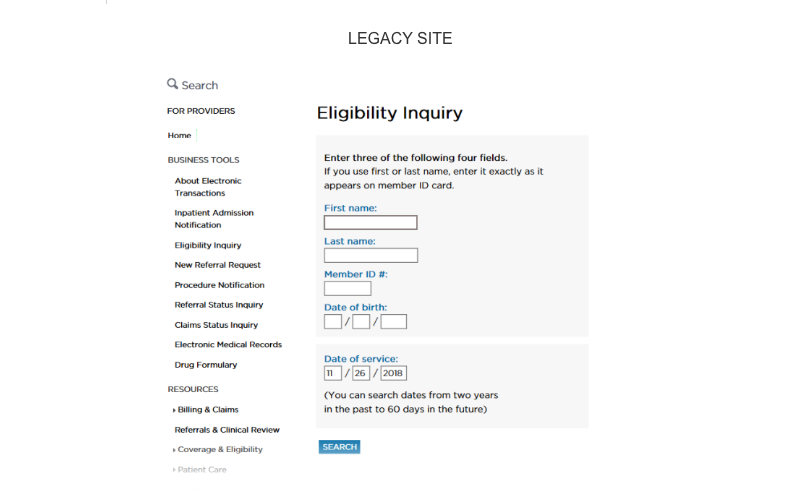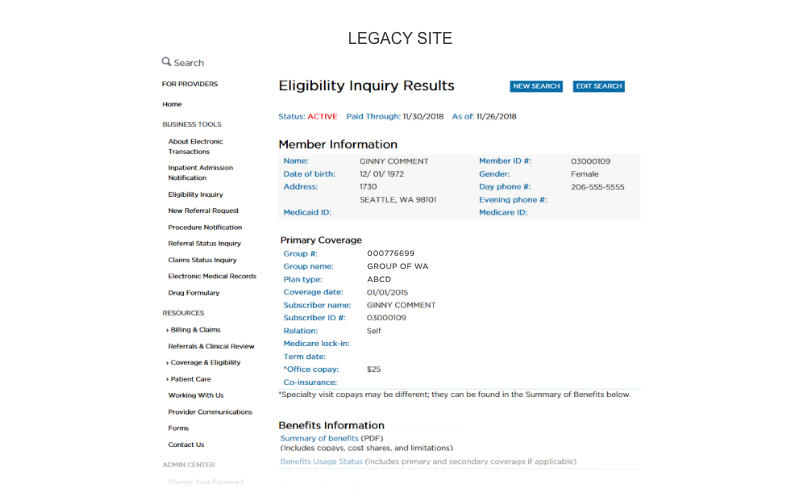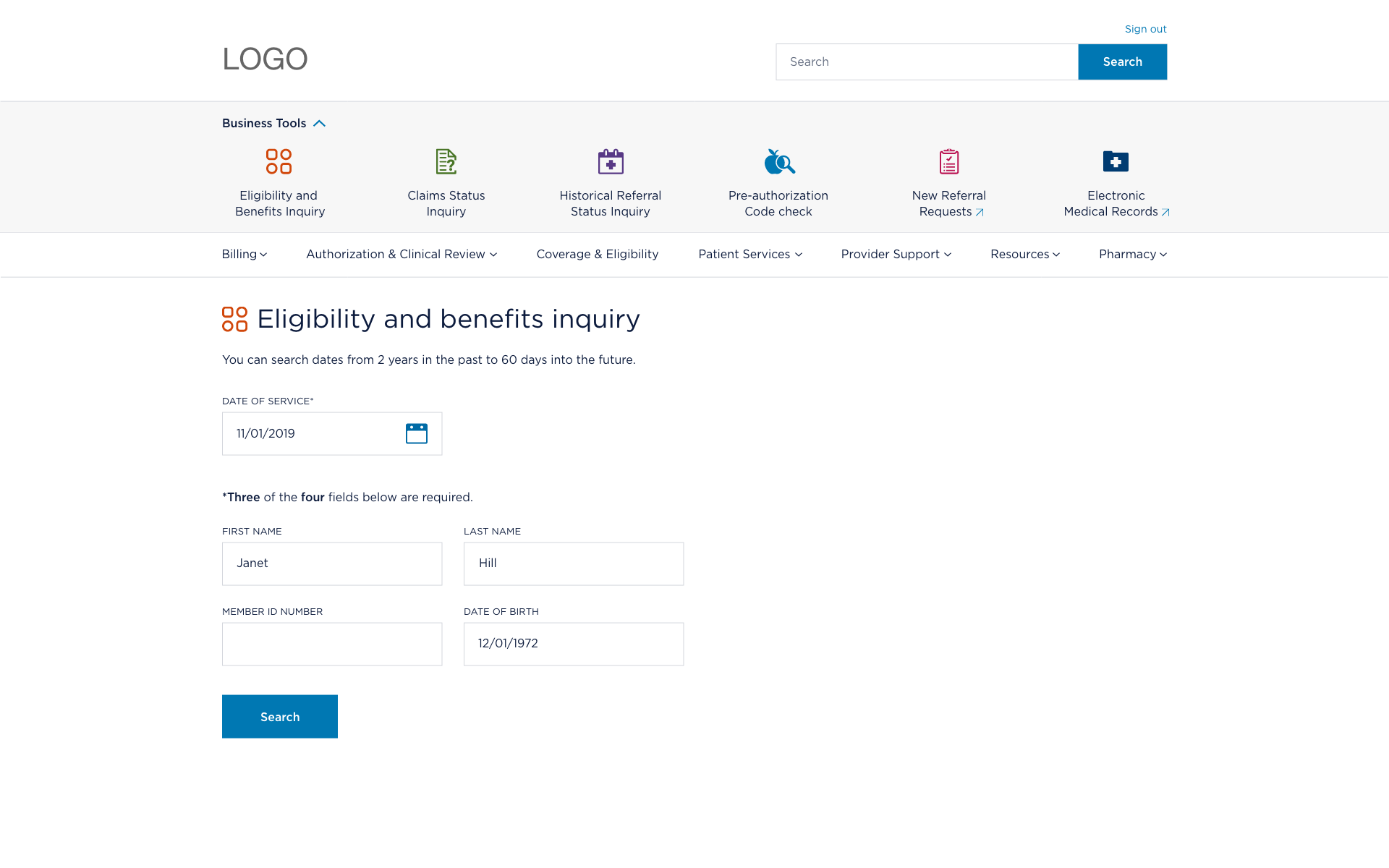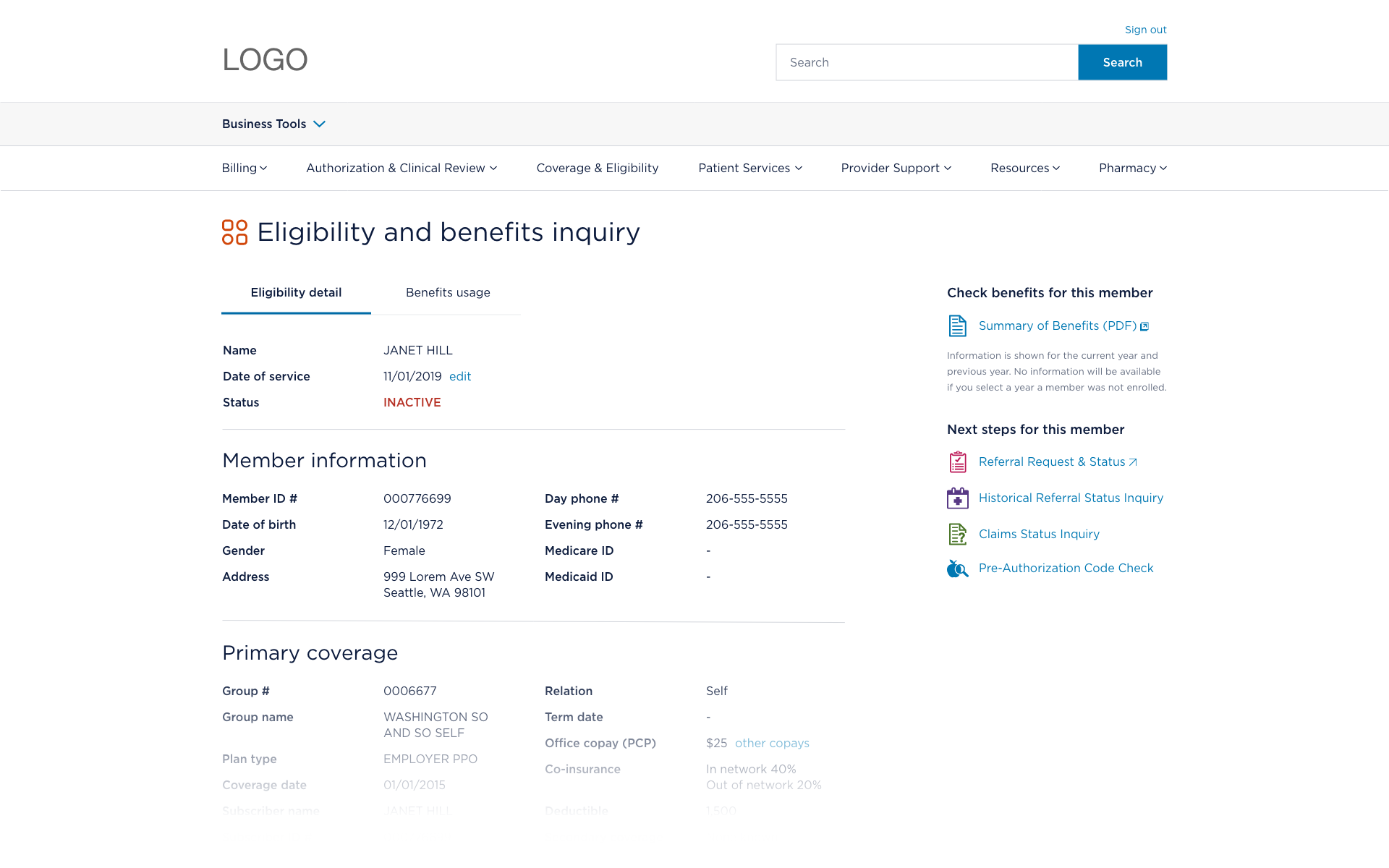The Challenge
The client needed a redesign of their secure portal for healthcare providers. They were experiencing many issues due to an outdated system and lack of information that burdened their support staff. The visual design was outdated and the public side of the website had already been redesigned (by myself) and the secure side needed to align. The biggest challenges from a design perspective were lack of investment in user research and unravelling the complexities of healthcare processes and requirements.
The Discovery
I participated in stakeholder meetings early in the process and was able to gain good foundational knowledge, which was helpful in understanding high level goals, getting team alignment, understanding the subject matter, and getting acquainted with the client’s team. Early on, I advocated for conducting user interviews to get a sense of where we could make the biggest impact on improving usability and providing value. Learnings from the research I led directly guided decisions and made an impression on the client, strengthening their confidence in our work.
The Outcome
The delivered redesign and platform overhaul reduced burden on the client’s customer support teams and gave better control over system management. The updated design reflected the brand appropriately and the client was very pleased with the outcome. Research-led design decisions were made to improve the usability of the portal for end users. Since the project was handed over upon completion and user testing was not in scope, I was not able to directly measure success, though our team implemented event tracking and made suggestions for measuring performance into the future.
Research
I conducted preliminary research when I designed the public side of this portal, producing assets like personas and competitive analyses. Expectations for research were not explicit or required. That left ambiguity and led to internal discussions with my team around where to best put our efforts. I advocated for user interviews at the beginning of the project and was successful at getting support to lead the charge that gained valuable insights for improvements. The team and I shared findings and recommendations with the client and agreed on what was feasible to address based on our contract. Interviews with 5 support staff members revealed:
- There was key information missing from the UI that providers regularly had to contact support staff to resolve
- There were naming conventions, content and information hierarchy that confused providers/li>
- Recently termed members did not show up in the UI, which caused providers confusion
- A number of other site-wide pain points were captured, shared with the client and assessed for severity and scoping purposes
Plan
Planning consisted of collaboration with the team on defining phases of design, review and development. The second designer and I worked together to get alignment where needed and support one another in problem solving and critique sessions. I regularly met with engineering to ensure feasibility of concepts and also with client stakeholders and brand team members for alignment and feedback.
I analyzed current system state to understand connections between tools and how a user moves through the system, looking for opportunities to reduce redundancy and improve usability.
Using key scenarios, I mapped out steps visually (filling in the blanks with placeholders) to start laying down the framework for the functionality of the tools.
Design
After planning, the design and review process consisted of mocking up concepts (fidelity level dependent on existing assets), reviewing internally, iterating, and then reviewing with stakeholders in cycles with planned out phases and timelines. Capturing the key scenarios, making final visual decisions and walking through high fidelity prototypes for sign off allowed me to pass the final designs to our developers, who were already implementing. I provided continued support to the developers as needed until handoff.
Impact
The final on-brand product was well received and the client continued to sign new contracts with us. Although we were not in the loop on the details of how much the project impacted the business, we know through feedback that many of the unnecessary calls to support teams that we set out to minimize were reduced. A net new tool and a number of the issues identified from user interviews were addressed. I would be curious to know by how much were call reduced? Did we reduce search errors or minimize the time a search takes?
I have fond memories of how my team worked together to execute this large project and a big part of that was trust, collaboration and good communication.
